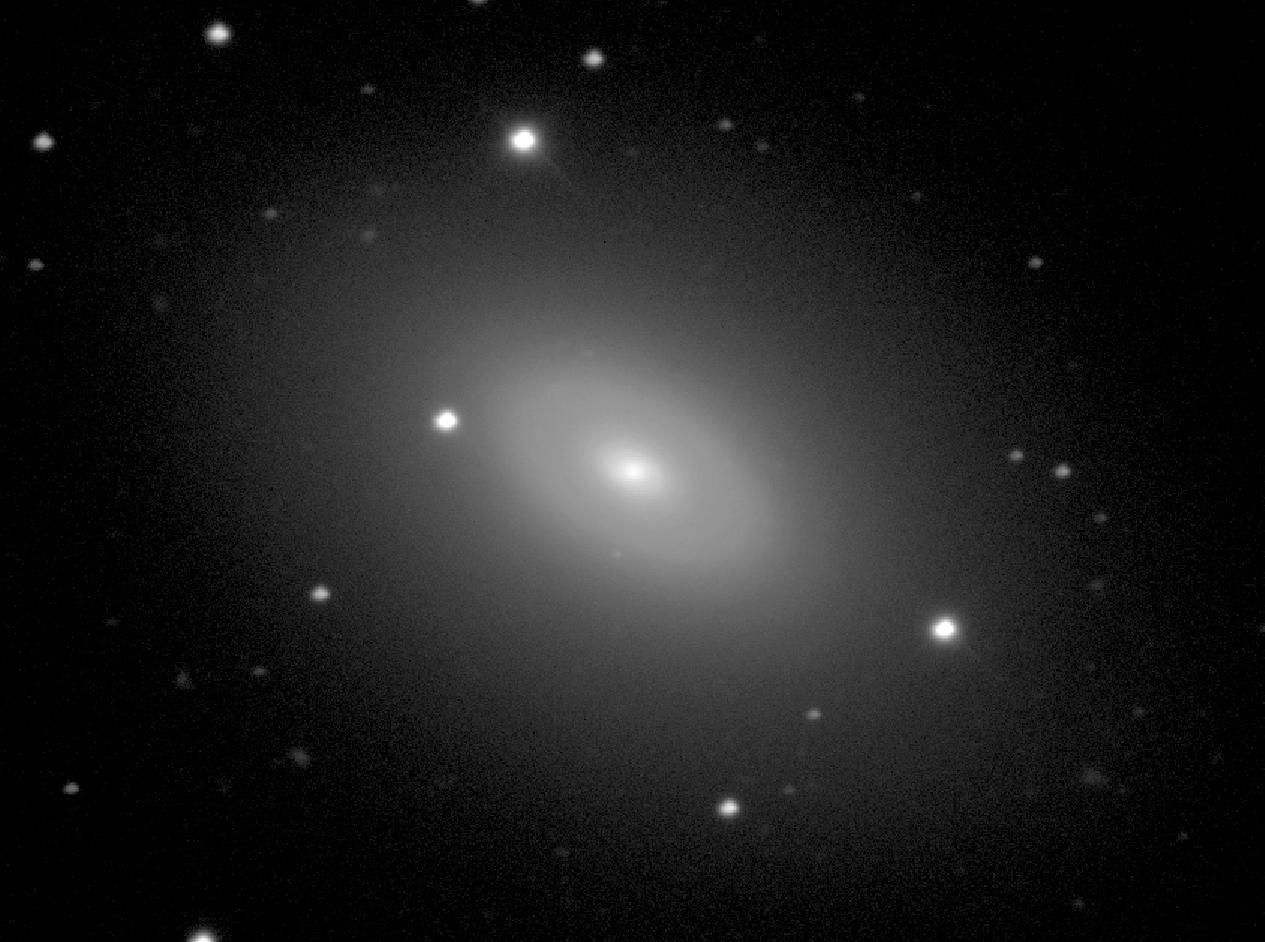

De Vaucouleurs Atlas Type: SA(rl)0+
Filter: B
Telescope: CTIO 1.5-m
North left , East down
Field Dimensions: 6.1 x 4.6 arcminutes
RC3 Type: SA(r)0o
RSA Type: S01/2(5) pec
Surface Brightness Range Displayed: 17.0-26.0 mag per square arcsec
Absolute Blue Magnitude: -21.1
De Vaucouleurs Atlas Description:
NGC 1553 is often taken as the prototype lens galaxy. This is well-illustrated in a photograph by Sandage and Brucato (1979), which shows that the inner parts of NGC 1553 are defined by a shallow brightness gradient with a sharp edge. Although the lens indeed looks flat and sharp-edged in the Sandage and Brucato image, in our Atlas image this feature is definitely more ring-like. We use the notation (rl) to describe its appearance. The (rl) shows definite structure in blue light in the form of weak doubling, something which was already noted by Sandage and Brucato (1979).
Most interesting is that a V-I color index map shows that the (rl) is a zone of slightly enhanced blue colors, as in other similar cases like NGC 4553 and NGC 7702 . (The colors in the center are not reliable, owing to core saturation in the I-band image used.) The S0+ classification is based on the structure of the ring, which is barely different from a lens .
Kormendy (1984a) analyzed stellar absorption velocities and velocity dispersions in the (rl) of NGC 1553 , and showed that the velocity dispersion in this feature is very high, indicating that it is dynamically ``hot." He suggested that this feature could be a remnant of a dissolved bar. In support of this idea, the image shown here suggests that the bulge region includes a small nuclear oval which could be a relic of a past bar episode. De Souza, Gadotti, and dos Anjos (2004) analyzed the two-dimensional light distribution in NGC 1553 and were unable to detect an exponential disk component. They concluded that NGC 1553 could be an E galaxy with a strong lens , an unusual combination which suggests the possibility of an interaction.